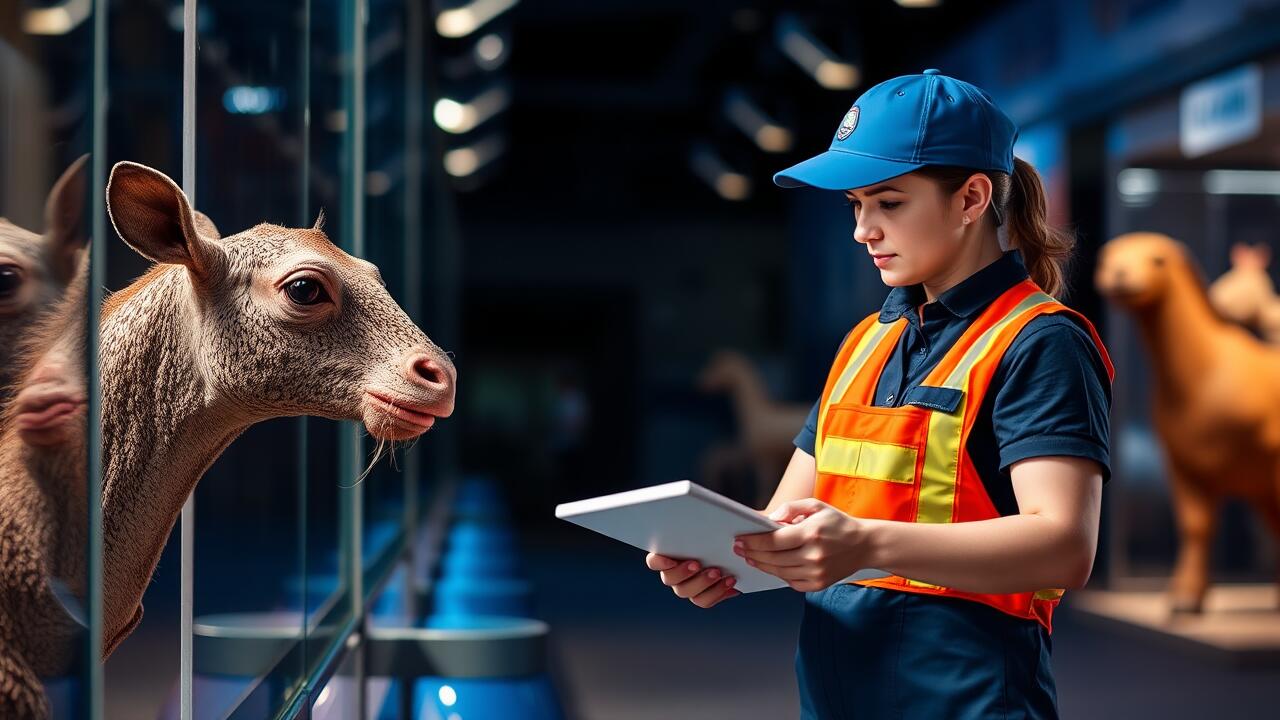
Interactive Exhibits and Visitor Engagement in Lahore Pakistan in Lahore Pakistan
Interactive exhibits have transformed the way visitors engage with Animal Exhibits. By incorporating hands-on activities and immersive experiences, these exhibits create a more dynamic environment that fosters deeper connections between the audience and the showcased animals. Touch tanks, augmented reality experiences, and live demonstrations allow visitors to learn about animal behavior and habitats in an engaging manner. This interactivity not only enhances educational outcomes but also encourages people to develop a greater appreciation for wildlife.
The role of technology in facilitating visitor engagement cannot be underestimated. Mobile applications and interactive screens provide additional layers of information about the animals in their exhibits, making the learning process more personalized and informative. Gamification elements, such as quizzes or scavenger hunts, motivate visitors to explore various animal exhibits thoroughly. By combining education with enjoyment, these interactive elements stimulate curiosity, prompting visitors to reflect on conservation efforts and the importance of protecting biodiversity.
Have a peek at this blog for further readings.
Enhancing Experiences through Interaction
Interactive elements are increasingly incorporated into animal exhibits, allowing visitors to engage with the environment more dynamically. This interaction fosters a deeper connection between the audience and the creatures they observe. By integrating touch screens, virtual reality experiences, and educational games, institutions create immersive opportunities that enhance learning and retention. These engaging features not only entertain but also inform visitors about wildlife conservation, habitats, and animal behaviors, promoting awareness.
Animal exhibits can also benefit from hands-on activities that include feeding sessions or guided tours led by knowledgeable staff. Such opportunities allow visitors to ask questions and gain insights directly from experts. These personal interactions elevate the experience, making it more memorable for audiences of all ages. Ultimately, the goal is to inspire a sense of responsibility towards wildlife and the environment through engaging and informative experiences.
Find out further details by clicking here.
Cultural Significance of Animal Exhibits
Animal exhibits serve as a critical means of education and awareness in cultural contexts. They offer insights into the biodiversity of our planet, highlighting the importance of conservation efforts. By showcasing various species, these exhibits foster a connection between visitors and the natural world. Many institutions work to present both native and exotic animals, enriching the understanding of ecological relationships. This educational component enhances the visitor experience while promoting environmental stewardship.
Beyond education, animal exhibits often reflect cultural values and beliefs about wildlife. These spaces can represent humanity's relationship with animals, illustrating how different cultures interact with and perceive the natural world. The curation of animal exhibits invites discussions around ethical treatment, conservation status, and environmental challenges. By engaging the public in these conversations, institutions highlight the role humans play in the wellbeing of other species and ecosystems.
Exhibits in Museums and Cultural Institutions
Animal exhibits play a crucial role in museums and cultural institutions, offering visitors a chance to connect with wildlife and understand biodiversity. These spaces often showcase various species through carefully curated displays, providing insights into different ecosystems. The goals of these exhibitions typically encompass education and conservation, sparking interest in the natural world while highlighting the importance of protecting animal habitats.
These exhibits often incorporate elements of storytelling, integrating cultural narratives and scientific knowledge. Through interactive displays and engaging visuals, museums invite audiences to embark on educational journeys that promote a deeper appreciation for wildlife. The incorporation of art and technology further enriches the visitor experience, making animal exhibits not just informative but also compelling and memorable.
Impact of Technology on Animal Exhibits
Technological advancements have significantly transformed animal exhibits, offering new methods to engage visitors and enhance their understanding of wildlife. Virtual reality environments enable guests to immerse themselves in habitats, providing experiences that were once limited to imagination. Augmented reality applications allow visitors to interact with digital animals superimposed on real-world settings, creating a dynamic learning experience. These innovations attract a broader audience, drawing in technology enthusiasts as well as wildlife lovers.
The integration of sophisticated monitoring systems within animal exhibits contributes to both the well-being of animals and the educational experience of visitors. Smart sensors can track animal behavior, providing real-time data that informs curators and enhances care practices. Interactive touch screens and multimedia presentations present the latest research and conservation efforts, fostering a deeper appreciation for biodiversity. Through these technological innovations, animal exhibits not only inform but also inspire action towards wildlife preservation.
Innovations Enhancing Exhibit Experiences
Innovations in technology have transformed the way visitors interact with animal exhibits. Virtual reality (VR) and augmented reality (AR) are increasingly used to create immersive experiences. These tools allow guests to observe animals in simulated environments or interact with digital representations. Such innovations provide educational opportunities that engage a broader audience and foster a deeper understanding of wildlife. Visitors can experience the thrill of encountering exotic species without the limitations of physical barriers.
Furthermore, interactive displays have become essential in modern animal exhibits. Touchscreens and multimedia installations encourage learning through engagement. Exhibits often feature real-time data about animal behaviors, habitats, and conservation efforts. This approach not only enriches the visitor experience but also promotes awareness of environmental issues. By making information accessible and engaging, animal exhibits can inspire visitors to take an active role in conservation efforts and support wildlife protection initiatives.
FAQS
What does the term "exhibit" mean in relation to animals?
In the context of animals, "exhibit" refers to a display or presentation of live animals in a controlled environment, such as a zoo or aquarium, where they are showcased for educational, research, or recreational purposes.
How do interactive exhibits enhance visitor engagement with animals?
Interactive exhibits allow visitors to actively participate in their experience, often through touch, feeding, or other hands-on activities, which enhances learning and creates a deeper emotional connection with the animals.
What role do animal exhibits play in cultural institutions?
Animal exhibits in museums and cultural institutions serve to educate the public about biodiversity, conservation, and the relationship between humans and wildlife, thereby fostering a greater appreciation for nature and its preservation.
How has technology impacted the way animal exhibits are created and experienced?
Technology has introduced innovative elements such as virtual reality, augmented reality, and interactive displays that enhance the way visitors experience animal exhibits, making them more engaging and informative.
What are some examples of innovations enhancing animal exhibit experiences?
Innovations include interactive kiosks, mobile apps providing real-time information, immersive environments that mimic natural habitats, and live streaming of animal behaviors, all aimed at enriching visitor engagement and education.

